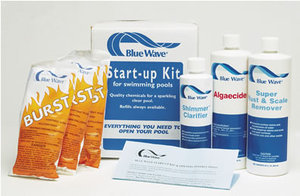How to Open Your Pool for the Season
Introduction
Even if you spend time on winterizing your swimming pool in preparation for the colder months, there will still be a few tasks to perform to open your pool up for use in the spring. If you’ve winterized your pool, your spring-time tasks will be relatively easy, but there’s still plenty to do.
Step One: Plan Ahead
Grab what you need before you start the work. If you stored pool accessories such as hoses, plugs, and clamps indoors over winter, seek them out, and check whether any cleaning, maintenance, or replacement is needed for those items. If any items need replacing, take them to the store with you to make sure you purchase the right items as replacements.
Check supplies of pool chemicals and purchase anything you need before you begin. Pool shock chemicals, chlorine, bromine, pH adjusters, and test strips or kits are among the items you should have before you start to open the pool up. Your pool’s chemical requirements may differ depending on a number of factors, so check your own equipment instructions for any other items you may need.
Once you have all of these items at hand, you are ready to begin.
Step Two: Remove the Pool Cover
If you covered your pool over winter (if not you’ve got a hefty cleaning job ahead of you!), the next step is removing it. Before taking the cover off the pool, try and remove as much debris as you can from the top. If you fitted an air pillow as part of your winterizing schedule the amount of debris that has collected should be minimal. You can remove excess water by siphoning or pumping water off the cover. Then use a leaf rake or long-handled brush to remove larger pieces of debris.
When removing the cover, it’s important to prevent any remaining water and debris that collected on the cover getting into the pool water, as this can immediately compromise the quality of the water, regardless of the measures you took to keep it clean over winter. It’s good to get two or three people to help with this part. Space you and your helpers evenly around the perimeter of the pool. Then try to fold the cover in on itself, keeping any remaining debris and water in the middle of the cover. Also try to keep the cover from touching the pool water (again, this is easier if you used an air pillow).
The pool cover should be thoroughly cleaned and allowed to dry completely before it’s stored, to prevent mildew building up over the summer.
Step Three: Get the Pump and Filter up and Running
Get your pool’s pump, filtration, and heating systems ready by reattaching plugs and hoses. Use lubricant on valves, rings, plugs, and other fittings before reattaching them. You’ll likely need to add a little water to the pool, especially if you drained it slightly to prevent water getting into the skimmer. At this point you can also check for leaks as you start to recirculate water around the pump system.
Next, clean the pool. This can be done over the course of several days, as most manufactures recommend that water should be allowed to recirculate for two or three days once the pump and filter are working. Remove debris, scrub the pool walls if necessary, and clean the pool’s filter. If the pool is especially dirty, bypass the filter when cleaning, to prevent the filter becoming clogged while you are cleaning.
Step Four: Clean the Water
Once the pool is clean, it’s time to administer a chlorine shock to remove bacteria. This should be carried out according to the instructions relevant to your pool,  climate, and other variable factors.
climate, and other variable factors.
Note – if you remove the pool cover to find that algae have bloomed over winter, add an algaecide to the water before you shock it. Algaecide will not work in the presence of chlorine, and the chlorine will not effectively kill algae – so allow at least four hours between adding algaecide and shocking the pool (or simply add the algaecide at some point while cleaning the pool itself). This way, the algaecide will kill the algae, and then shocking the pool with chlorine breaks down the dead algae so that the filter can remove it more efficiently.
Step Five: Enjoy!
Achieving clean, clear water will take much longer if you have to deal with algae. Within a few days of recirculation, however, your water should be clear and free from contaminating microorganisms. Once the water is clean, it’s time to test and balance pH and calcium hardness, and check chlorine levels. You can do this yourself using a kit, or take a sample of water into a local pool supply store for analysis.
The pool is ready to use once chlorine drops to safe levels, and the water is clear. Depending on your climate, you may want to hold off until the weather and the water warms up, of course!
Recent Posts
-
Transform Your Backyard Oasis with our Top Pool Products
Are you looking to upgrade your backyard oasis? Look no further th …Mar 15, 2024 -
The Ultimate Guide to Pool Maintenance
Owning a pool can bring endless hours of fun and relaxation to you …Mar 08, 2024 -
Top 5 Must-Have Spa Accessories for the Perfect Relaxation
Are you looking to take your spa experience to the next level? Loo …Mar 01, 2024

